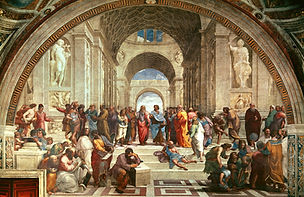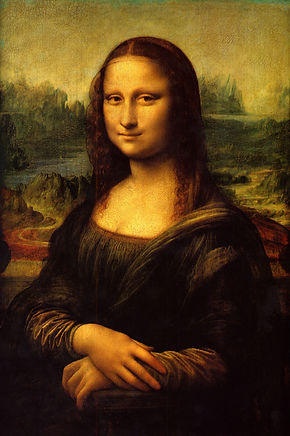
 Da Vinci's sketches |
|---|
ONE CAN HAVE NO GREATER MASTERY THAN MASTERY OF ONE'S SELF
Leonardo Da Vinci
Arrezo, Italy 14th Century
Petrarch; and His Influence in the Italian Renaissance
69
Years



Petrarch (1304-1374) was considered to be the first humanist, but no where near the first to use the the term 'renaissance'. Apart from humanism, Petrarch began the discussion and acts of secularism, rationalism, and individualism. Petrarch began the quest to study the Latin and Roman classics, such as the letters between Roman author and statesmen Cicero, and his friend Atticus. Petrarch took interest in the early Latin work because of the way they could praise, persuade, criticize, and encourage. These works were often written by: statesmen, lawyers, notaries, merchants, and artisans.
The revival of classic Latin and Roman styles of art, the classics, brought a new era of patronage and scholarship in the form of education and/or payment from monarchs and those higher in their social hierarchy, and guilds, or merchants. The RCC took part in this patronage and had art conceived in the image of the church.
Revival of Classic Text
(Above is a sketch from one of Leonardo da Vinci's science notebooks)

31
Years
Giovanni Pico della Mirandola, a Civic Humanist
Florence, Italy Late 14th Century
Giovanni Pico della Mirandola (1463-1494)was the best philosopher of the renaissance, right under his mentor and guide, Marsilio Ficino (1433-1499). Pico was a civic humanist, studying greek philosophy rather than just Latin and Roman text. Marsilio's studies and teachings consisted mostly of Plato, and Plato's emphasis on on spirit and eternal subjects, rather than material and transient. Pico had written a controversial paper called, 900 Theses which were arguments, or argumental points against the church. The pope would -
Images above are works of Giovanni Pico della Mirandola, left is '900 theses' and right is 'Oration on the Dignity of Man.


not have someone challenging the power of the heavens, nor the power of the church and had Pico incarcerated. The 900 Theses was only part of his work, an unpublished (at that time) essay was used as an introduction to Pico's writing. The essays' name?
Oration on the Dignity of Man

Florence, Italy. 1374-1444
Leonardo Bruni, the Humanist Historian
74
Years
Leonardo Bruni, a Chancellor of Florence. For political purposes, he had to be a fast adapting learner. Leonardo Bruni related ancient texts to their modern day republic and institutional work, along with documenting his current history, and translating greek philosophers like Aristotle. The Roman Catholic Church had begin to decline with the Roman Republic, shortly after the death of Cicero and the Latin language beginning to phase out of history. With the revival of these texts, Bruni had translated, theocracy was dropping as more people studied the classics instead of religion.

Above: grave of Leonardo Bruni.

Left: Sculpture of Niccolo Machiavelli outside Uffizi Gallery, Florence.
Below: copy of 'The Prince' written by Niccolo Machiavelli
58
Years
Niccolo Machiavelli, a Ruthless Humanist
Florence, Italy. 1469-1527
Niccolo Machiavelli was a Civic Humanist, and political theorist. Machiavelli was secretary to a governing body in Florence, and responsible for an army and most diplomatic missions. Machiavelli didn't believe in theocracy, but instead in a strict, functioning government, using any means necessary for the well being of the citizens. Rulers with virtu were great examples of this type of government. Most modern day people see him as realistic, or cynical. I think Machiavelli would lead an unstoppable nation using todays' resources.

THE PRINTING PRESS
The printing press. For ages books had been hand copied at painstakingly slow paces, but with the invention of the printing press, books and news could get around faster than ever before.The dissemination of news and literature was creating a new window for learning and perspective. A great thing it was too. With all the religous talk and issues, books could be put out, and things like Luther's vernacular translated bible could florish and show the rest of Europe why the shouldn't be following who they are and convert, or vice versa with another piece of literature produced by the opposing group. Books led people to know how and why things were, they taught people ways of history and people in far away lands, books brought to Germany from Italy or Spain could be translated to German and the printing press made it possible to spread the word of these authors, from distant places.
Renaissance and the Visual Arts
During the renaissance, artists; sculpted, painted, wrote, and many other forms of art passed the time, like music. Of course the artists weren't painting just to paint, they were payed for it! The wealthy would pay to have paintings in their homes, perhaps portraits or other sophisticated subjects. On behalf of the political, there were statues placed around cities, such as Michelangelo's David. As for religion, the church had a fair share in purchasing art too. The church would purchase artwork of religious scenes, like the nativity,or Christ wearing his crown of thorns. Having painting from a skilled artist did show a sign of wealth or sophistication, so naturally everyone wanted them.
Below is a photograph of the ceiling and walls of the Sistine Chapel. The ceiling and walls painted in fresco by Michelangelo
in 1512.

Below is a sculpture by Donatello representing Saint Mark in the years 1411-1413.
Michelangelo, uses a lot figures in his work, mostly human. Michelangelo paints and sculpts human forms seamlessly, and uses Contrapposto, standing with more wight to one side, in his statue The David. Contrapposto was a popular technique used in the renaissance, used by some of the worlds most renown sculptors. Not only a beautifully crafted work, but the single leg it stands on serves a purpose as its post, hence the use of the italian word posto in the name. Symmetry depicts The Sistine Chapel, every last arch has a counter arch, and the equal amount of space for paint to be placed on either side, showing beauty in symmetry is one way art flourishes.
Below is a sculpture of the Bible figure, David, produced by Michelangelo in the year 1504.

Below is a sculpture by Donatello depicting Saint George, sculpted in the year 1420

Donatello forms his statues like pillars. Straight up and down. There is symmetry and emotion in the face, but no movement in the sculpture. In a few of Donatello's sculptures you can see the Contra Posto, if any.

Below is a fresco by the name 'School of Athens' painted in 1509.
Below is an oil painting by Rafael ' The Marriage of a Virgin.'

In these two paintings by Raphael, you can see normal settings made into art. There is nothing significant about the settings, 'School of Athens' to the left, and 'The Marriage of a Virgin' right. Whats special about these paintings is the amount of detail Raphael puts into his characters.

'The Last Supper' a painting in the Convent of Santa Maria delle Grazie, Milan. This painting depicts Jesus during Eucharist.

The Mona Lisa, below, is perhaps Leonardo da Vinci's most succesful painting to this date.
Between these two
Da Vinci paintings, there is a pattern of triangles, used to emulate perfection and show symmetry. The detail in characters is strong, and the linear perspective finely detailed by Leonardo. Again, an artist as made beauty out of a plain sight, supper,and a woman.
